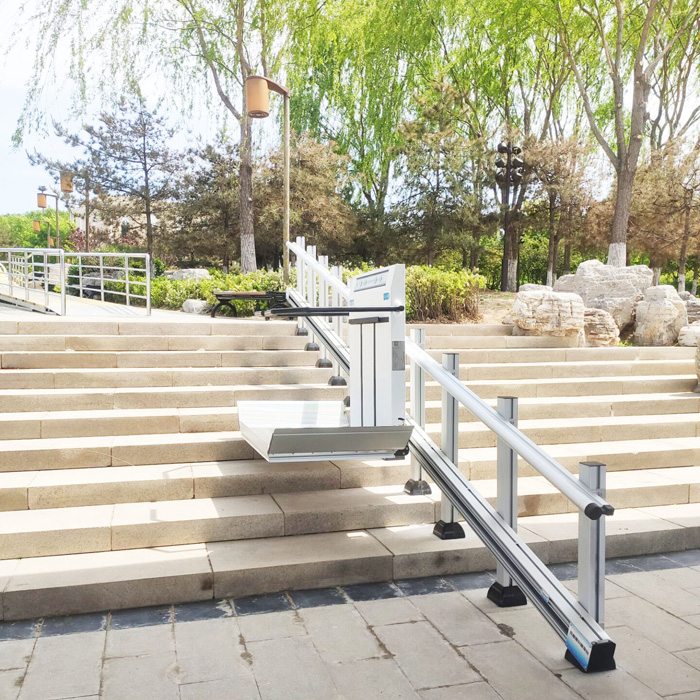
Inclined platform lifts operate using a system of cables, pulleys, and motors. The platform is attached to a carriage that moves along the track, allowing the user to easily move between different levels of a building. The platform typically has foldable ramps at either end to allow for easy access onto and off of the lift. Some models also come with safety features such as grab bars, seat belts, and sensors to ensure the user’s safety during operation.
The lift is controlled using a control panel located on the platform itself or at the top and bottom of the stairs. The user can simply press a button to activate the lift and move it up or down the stairs. Some models may also have a key switch to prevent unauthorized use of the lift.
Inclined platform lifts come in various designs to suit different types of staircases and user needs. Some models are straight and are suitable for straight staircases with no curves or turns. Others are curved or custom-designed to accommodate staircases with turns, landings, or unusual shapes. The lifts can also be installed indoors or outdoors, depending on the user’s requirements.
Installation of an inclined platform lift typically involves attaching the track to the stairs or wall using brackets or supports. The lift may also require electrical wiring to connect it to a power source. Before installation, a professional assessment of the site is usually conducted to ensure that the lift meets all safety and regulatory requirements.
Inclined platform lifts are beneficial for individuals with mobility challenges as they provide a safe and convenient way to navigate stairs or inclines. They offer independence and freedom of movement for wheelchair users or those with limited mobility, allowing them to access different levels of a building without assistance. Additionally, these lifts can help to make buildings more inclusive and accessible for all individuals, regardless of their physical abilities.
